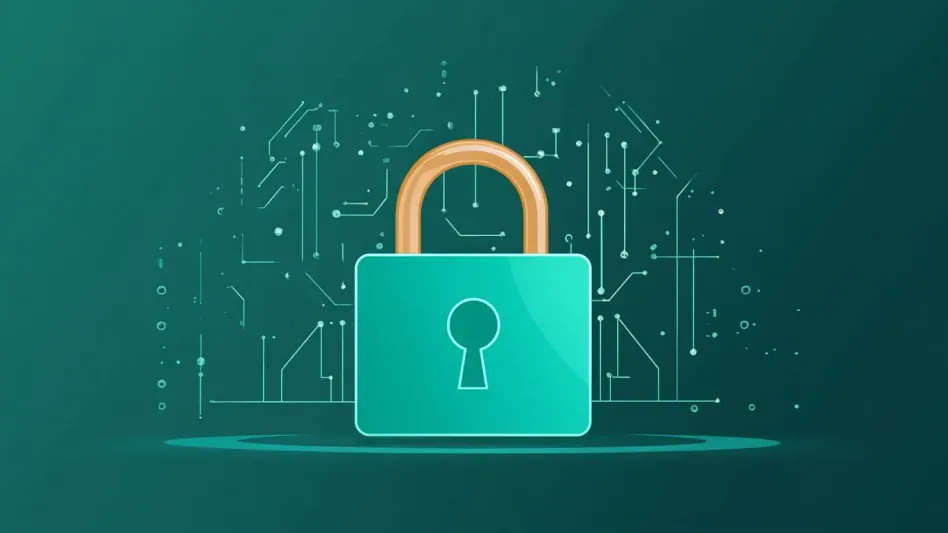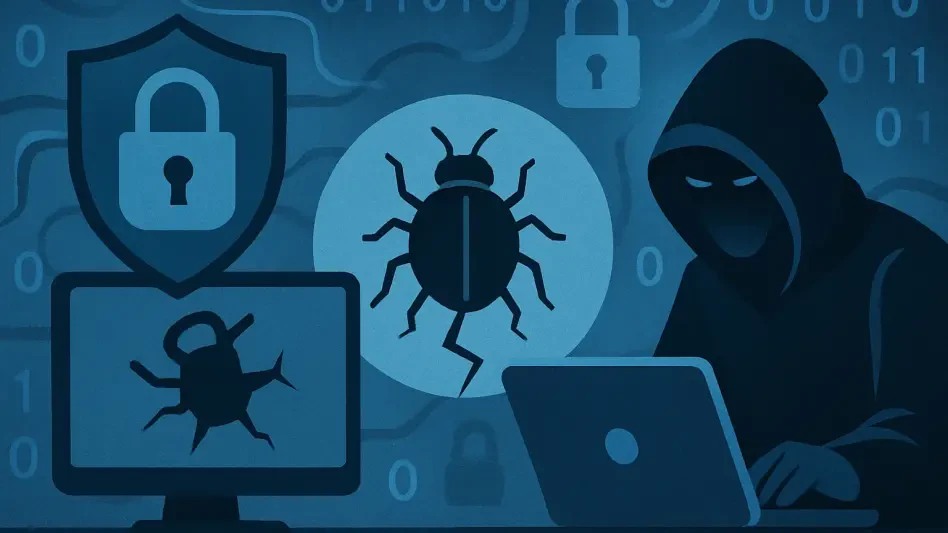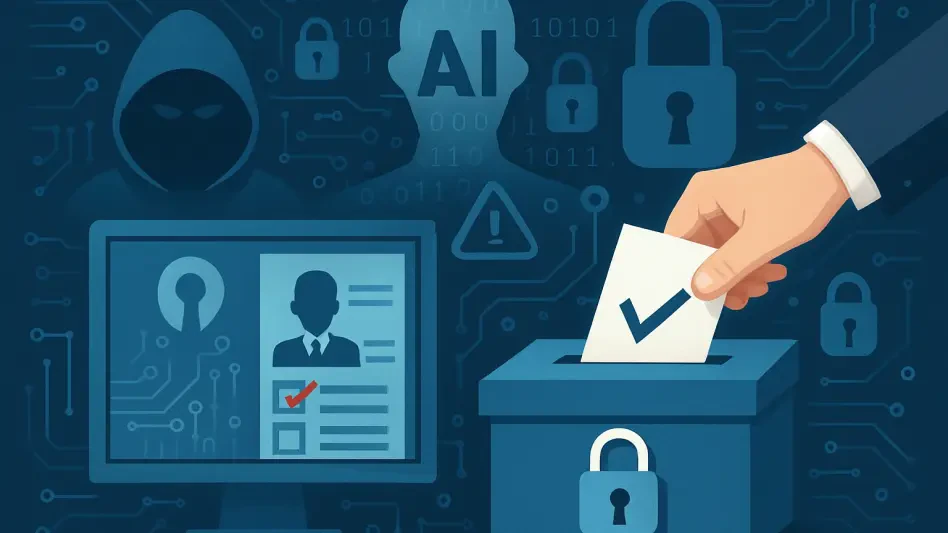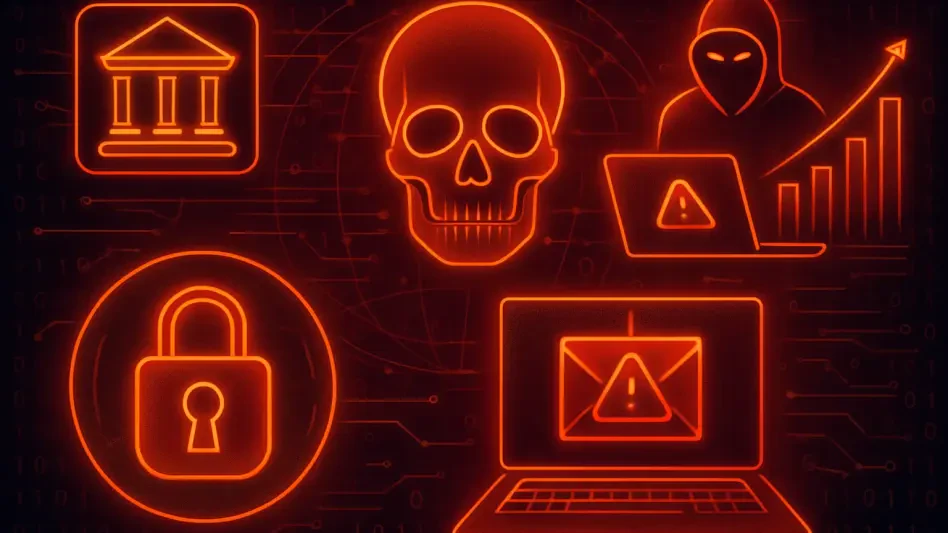Cybersecurity is becoming increasingly critical for businesses as cyber threats continue to evolve in complexity and frequency. Organizations must strengthen their cybersecurity strategies to protect endpoints, networks, and cloud environments, especially as they undergo digital transformation and manage sensitive data. In 2024, the average cost of a data breach rose to $4.88 million, a 10% increase from the previous year. This financial impact underscores the necessity for robust managed cybersecurity solutions that offer continuous monitoring and threat response.
The Growing Necessity for Cybersecurity Solutions
In today’s digital age, the increasing number of cyber threats highlights the growing necessity for robust cybersecurity solutions. With more businesses and individuals relying on online platforms for transactions and data storage, the risk of cyberattacks has become a significant concern. Ensuring the safety and security of sensitive information is paramount, and implementing comprehensive cybersecurity measures is essential to protect against potential breaches.
Comprehensive Tools and Frameworks
Cybersecurity solutions have become vital as they encompass comprehensive tools, frameworks, and best practices designed to prevent attacks on computer systems. A significant concern is insider threats, which are responsible for over 43% of data breaches, highlighting the insufficiency of basic security measures like antivirus. These insider threats can range from malicious actions by disgruntled employees to inadvertent errors made by well-meaning staff. To mitigate these risks, effective cybersecurity solutions must integrate endpoint protection, network firewalls, zero trust, and threat intelligence to provide multi-layered security. This approach ensures that even if one layer is compromised, others remain to protect the organization.
Managed cybersecurity services go a step further by offering continuous monitoring to identify and neutralize threats promptly. This minimizes the potential for prolonged compromises and quickly addresses vulnerabilities as they arise. The integration of endpoint detection and response (EDR) solutions can enable real-time surveillance and intervention, safeguarding critical assets. Furthermore, automated threat analysis powered by AI and machine learning elevates the ability to recognize and respond to sophisticated, evolving threats, providing an essential shield against cybercriminal activities.
Cloud Computing Security
In addition to traditional systems, cloud computing security has become a major focus, especially as businesses increasingly rely on cloud services for storage, applications, and day-to-day operations. Cloud services provide unmatched flexibility and efficiency, yet they are frequently targeted by cyber attackers aiming to exploit their vulnerabilities. Therefore, securing the cloud has never been more critical. Managed services are increasingly being adopted by small businesses to achieve enterprise-grade protection with limited investment and resources. These managed services provide a cost-effective and efficient means of ensuring that businesses can protect their data and cloud-based applications despite limited IT budgets.
Solutions like public key infrastructure (PKI) and cloud access security brokers (CASB) offer robust security measures, protecting sensitive data from unauthorized access. PKI ensures encrypted connections and secure authentication, while CASB monitors and controls cloud application usage to prevent data breaches. Moreover, by incorporating cloud-native security tools and practices, businesses enhance their defenses against cyber threats tailored to exploit specific cloud environments. Thus, robust cybersecurity for cloud computing environments is not just desirable but essential, particularly as organizational reliance on these technologies grows.
Current Cybersecurity Landscape
Economic and Reputation Stakes
Cybersecurity is a critical element that extends beyond the IT function, impacting various facets of a business. Cyber threats pose substantial risks to operations, brand reputation, and customer trust. A single security incident can disrupt supply chains, lead to data leakage, and result in significant fines. For example, recent high-profile breaches have revealed how cyberattacks can hinder production lines, cause financial turmoil, and severely damage an organization’s public standing. Therefore, having a unified security strategy, whether managed internally or through managed services, ensures an organization’s readiness to tackle emerging threats comprehensively.
Cybersecurity incidents often strike at the very core of business functions, leading to immediate and often lasting fallout. For instance, an attack that disables critical infrastructure can halt manufacturing processes, leading to significant revenue losses and delayed delivery schedules. The reputational damage following a breach, especially if it involves the leak of sensitive customer information, can erode trust and drive customers away. Moreover, in an era of stringent regulatory frameworks, failing to protect data adequately can result in hefty fines that further compound the financial impact of a breach. Consequently, it becomes imperative for businesses to invest in strong cybersecurity measures that safeguard their operations, finances, and reputational standing both now and in the future.
Advancement of Attack Techniques
Modern cyberattacks have evolved significantly, often involving sophisticated strategies that evade traditional protection measures. Cybercriminals employ various techniques such as phishing, malware, and privilege escalation to maintain persistence within targeted networks. Phishing attacks trick individuals into providing sensitive information or deploying malware unwittingly, while malware itself can infiltrate systems to steal data or disrupt operations. Privilege escalation allows attackers to gain unauthorized access by exploiting vulnerabilities, enabling them to manipulate or destroy data.
To counter these advanced threats, AI-based cybersecurity products are becoming essential. Artificial intelligence and machine learning can analyze patterns and behaviors to identify unusual activity indicative of an attack. These AI-driven solutions offer predictive insights, allowing for the early detection and prevention of potential threats. For example, behavioral AI can identify anomalies that may suggest insider threats or compromised credentials, giving security teams a critical advantage in averting significant breaches. Thus, embracing AI as a fundamental component of cybersecurity strategies facilitates a proactive stance against ever-evolving criminal tactics.
Regulatory and Compliance Needs
Legal frameworks like GDPR, HIPAA, and PCI DSS mandate strict cybersecurity policies to protect sensitive data and ensure privacy. Organizations that fail to comply with these regulations not only face substantial fines but also risk losing customer trust. These regulations require businesses to implement comprehensive security measures, conduct regular audits, and maintain transparent practices regarding data management and protection.
Real-time compliance tools have become invaluable in helping organizations adhere to these evolving standards. By providing automated monitoring and reporting, these tools ensure that businesses remain compliant without significant manual effort. They help track compliance status, identify potential gaps, and offer remedial actions to address vulnerabilities promptly. In addition, integrating compliance management into the broader cybersecurity strategy ensures a holistic approach that aligns protective measures with legal requirements. This ongoing alignment fosters trust among customers and partners, reinforcing the organization’s commitment to safeguarding sensitive data.
Protecting Distributed Workforces
Companies that have adopted remote and hybrid work models must reassess their security strategies to protect distributed workforces effectively. With employees accessing company resources from various locations, the risk of cyber threats has increased, necessitating stronger security measures. This includes robust endpoint protection, secure access to networks, and comprehensive training to raise awareness about potential cybersecurity risks. By implementing these strategies, organizations can ensure their remote teams remain productive and secure, regardless of where they work.
As more employees continue to work remotely, the attack surface expands significantly. Remote work introduces unique challenges, such as insecure home networks, personal device usage, and inconsistent security practices. Cybercriminals exploit these vulnerabilities, making robust endpoint security and cloud-based solutions critical for protecting distributed workforces. Without strong security measures, remote workers can unwittingly become entry points for cyberattacks, compromising the entire corporate network.
Endpoint Detection and Response (EDR) solutions are essential in this context, continuously monitoring remote connections to minimize risks. EDR tools provide real-time visibility into endpoint activities, quickly identifying and responding to potential threats. They offer advanced threat detection, automated responses, and detailed forensics to ensure swift containment of any incidents. Additionally, secure VPNs, multi-factor authentication (MFA), and encrypted communications further bolster the security of remote work environments, creating a more resilient defense against a variety of cyber threats. Ensuring comprehensive protection for remote employees not only safeguards sensitive data but also maintains operational continuity in an increasingly digital workspace.
Financial and Operational Risks
Ransomware attacks and data breaches can inflict substantial financial losses and damage reputations. Cybercriminals use ransomware to encrypt critical data and demand payment for its release, effectively holding businesses hostage. The financial impact extends beyond ransom payments; recovery costs, legal fees, and operational downtime can quickly add up. For instance, companies may face millions of dollars in expenses to restore systems, comply with legal proceedings, and manage public relations crises following an attack.
Preventive cybersecurity measures and automated response capabilities are crucial in containing attacks, thereby minimizing operational disruptions. Implementing multi-layered security defenses, including intrusion detection systems (IDS), firewalls, and secure backups, helps mitigate the risk of severe damage. Automated incident response tools enable swift reactions to detected threats by isolating affected systems and initiating recovery protocols, effectively limiting the attack’s scope. Moreover, regular security audits and vulnerability assessments reveal potential weaknesses before cybercriminals can exploit them. By proactively addressing these risks, organizations ensure smoother operations and protect their financial health and reputations from the devastating effects of cyberattacks.
Scalability for Growing Businesses
Cybersecurity solutions must adapt to the evolving needs of enterprises of all sizes. As businesses grow, they often face increased complexity in their IT infrastructure, heightened volumes of data, and expanded network perimeters. Cybersecurity solutions that offer automated updates, AI detection, and user-friendly interfaces ensure that even small businesses can achieve enterprise-level security as they grow. These features make it easier for organizations to scale their security measures without requiring significant adjustments or additional resources.
AI and machine learning play vital roles in enhancing the scalability of cybersecurity solutions. They enable continuous threat hunting, identify emerging patterns, and update defenses autonomously, keeping security frameworks resilient against new threats. Furthermore, modular security solutions allow businesses to add or upgrade features as needed, ensuring protection remains aligned with their growth trajectory. User-friendly interfaces make these tools accessible to non-technical staff, promoting wider adoption and fostering a culture of security within the organization. By leveraging scalable cybersecurity solutions, businesses can secure their expanding operations without compromising effectiveness, allowing for seamless and secure growth.
Top Cybersecurity Solutions for 2025
SentinelOne
The SentinelOne Singularity Platform is an AI-powered Extended Detection and Response (XDR) solution that offers comprehensive visibility, AI-driven threat detection, and instant response. It provides protection for endpoints, cloud workloads, and identities across various environments, integrating into a single console for management. The platform’s adaptability and cross-environment security ensure robust protection against evolving threats, making it an essential tool for modern cybersecurity strategies.
One of the key features of SentinelOne is its behavioral AI, which excels in detecting new and evasive attacks. By continuously analyzing the behavior of applications and users, it can identify anomalies that indicate a potential threat. Additionally, one-click remediation capabilities allow security teams to reverse affected devices to their pre-infection states quickly, minimizing downtime and data loss. The platform also includes comprehensive threat hunting through an intuitive interface, enabling security professionals to investigate and neutralize threats proactively. Integration with managed services provides continuous monitoring, ensuring that threats are identified and addressed promptly.
- Key Features:
- Behavioral AI for detecting new, evasive attacks.
- One-click remediation to reverse affected devices to pre-infection states.
- Comprehensive threat hunting through an intuitive interface.
- Integration with managed services for continuous monitoring.
CrowdStrike Falcon
CrowdStrike Falcon is renowned for its endpoint visibility and integration of threat intelligence to detect attacks early. Its cloud-native architecture and managed services provide ongoing security control, ensuring that organizations remain protected against sophisticated cyber threats. Falcon’s comprehensive approach to endpoint protection makes it a preferred choice for businesses seeking robust and scalable security solutions.
The Threat Graph feature of CrowdStrike Falcon stands out as a powerful tool for early warning of new threats. By analyzing and correlating event data from millions of endpoints globally, the Threat Graph provides actionable insights into emerging cyber threats. This proactive detection system helps security teams identify and mitigate risks before they can cause significant harm. The platform also excels in detecting fileless malware, which evades traditional antivirus methods by residing in memory rather than on disk. Easy agent deployment further simplifies the integration of Falcon into existing infrastructures, reducing the burden on IT teams. Additionally, CrowdStrike offers 24/7 managed services, providing an added layer of protection and expert oversight.
- Key Features:
- Threat Graph for early warning of new threats.
- Detection of fileless malware.
- Easy agent deployment.
- 24/7 managed services for added protection.
Palo Alto Networks
Palo Alto Networks integrates application layer analysis and threat protection to deliver advanced network security solutions. Their firewalls and automation tools are designed to enhance cloud security and promote zero trust architecture, ensuring that all network traffic is verified and monitored continuously. This comprehensive approach helps organizations defend against modern cyber threats that target network vulnerabilities.
The Cortex XSOAR platform by Palo Alto Networks is a standout feature, offering automated threat-handling playbooks that streamline incident response processes. By orchestrating complex threat responses and integrating various security tools, XSOAR enhances the efficiency and effectiveness of cybersecurity operations. Another significant feature is the WildFire Sandboxing solution, which safely analyzes suspicious files in an isolated environment to prevent malware from reaching critical systems. Real-time machine learning insights allow for dynamic threat detection, adapting to new attack techniques as they emerge. The flexible integration with other security systems ensures that organizations can maintain a cohesive and comprehensive security posture.
- Key Features:
- Cortex XSOAR for automating threat-handling playbooks.
- WildFire Sandboxing for handling suspicious files safely.
- Real-time machine learning insights.
- Flexible integration with other security systems.
Fortinet
Fortinet offers extensive security solutions ranging from SD-WAN to endpoint protection, all integrated into a single management platform. This integration provides comprehensive coverage and compliance reporting, making Fortinet a reliable choice for businesses seeking unified security solutions. The robust security fabric of Fortinet products ensures seamless protection across diverse environments, enhancing the overall security posture.
One of the key strengths of Fortinet is its AI-driven intrusion detection system, which leverages advanced algorithms to identify and respond to threats autonomously. This proactive detection mechanism reduces the likelihood of successful attacks and minimizes response times. The security fabric integrates all Fortinet products, allowing for centralized management and consistent application of security policies. Sandbox integration is another critical feature, providing a secure environment to quarantine and analyze suspicious files, preventing malware from spreading within the network. Fortinet’s high-performance firewalls are particularly beneficial for large data centers, offering robust protection without compromising network speeds.
- Key Features:
- AI-driven intrusion detection
- Security fabric integrating all Fortinet products
- Sandbox integration for quarantining suspicious files
- High-performance firewalls for large data centers
IBM Security
IBM Security provides robust cybersecurity solutions with tools like QRadar SIEM for log management and Guardium for data auditing. Supported by a global threat intelligence network, IBM’s solutions are designed to address complex cybersecurity challenges and provide comprehensive protection. The advanced capabilities of IBM Security tools ensure that organizations can safeguard their data and systems effectively.
QRadar SIEM is a cornerstone of IBM’s security offerings, providing comprehensive log collection and analysis to identify suspicious activity. The platform’s advanced analytics and correlation capabilities enable rapid detection of potential threats, allowing security teams to respond swiftly. IBM’s X-Force Threat Intelligence enhances protection by offering insights into global threat trends and emerging attack techniques. Guardium for data auditing ensures that sensitive information is monitored and protected against unauthorized access, maintaining compliance with regulatory requirements. Additionally, MaaS360 provides seamless endpoint management, ensuring that all devices accessing corporate data are secure. Automated incident response features streamline routine security operations, allowing for efficient and effective threat management.
- Key Features:
- QRadar SIEM for comprehensive log collection and suspicious activity alerts.
- X-Force Threat Intelligence for enhanced protection.
- MaaS360 for seamless endpoint management.
- Automated incident response for routine security operations.
Trend Micro
Trend Micro offers robust protection for digital assets, employing XDR to analyze data from various sources for integrated threat detection. Their solutions are designed to provide comprehensive security across endpoints, networks, and cloud environments, ensuring that businesses can protect their critical assets effectively. Trend Micro’s approach to cybersecurity emphasizes proactive threat detection and response, making it a reliable choice for organizations seeking advanced protection.
The Smart Protection Suites of Trend Micro offer gateway-level protection, preventing threats from entering the network at the first point of contact. The XDR Ecosystem enhances threat detection by correlating data from multiple sources, providing a more comprehensive view of potential threats. The Cloud One Platform offers a wide range of security services for cloud environments, ensuring that businesses can protect their cloud-based assets effectively. Virtual patching is another significant feature, addressing known vulnerabilities quickly to prevent exploitation. By providing these robust security measures, Trend Micro ensures that businesses can maintain a secure and resilient digital infrastructure.
- Key Features:
- Smart Protection Suites for gateway-level protection.
- XDR Ecosystem for increased threat detection.
- Cloud One Platform for comprehensive cloud security.
- Virtual patching to cover known vulnerabilities.
Cisco
Cisco’s security solutions span from network to endpoint security, anchored by its SecureX suite. This comprehensive approach ensures visibility and protection across the entire enterprise, making Cisco a trusted name in cybersecurity. The integration of advanced security tools and practices ensures that businesses can defend against a wide range of cyber threats.
The zero trust architecture of Cisco is a fundamental component of its security offerings, providing stringent access controls to ensure that only authorized users can access critical resources. Umbrella DNS security prevents access to malicious domains, enhancing network protection. The SecureX platform integrates various security tools into a cohesive system, allowing for centralized threat management and streamlined operations. Cisco’s Talos Intelligence provides adaptive threat defense by analyzing global threat trends and developing proactive security measures. By combining these advanced security features, Cisco ensures that businesses can maintain a robust and resilient cybersecurity posture.
- Key Features:
- Zero trust architecture for stringent access controls.
- Umbrella DNS security for blocking malicious domains.
- SecureX integration for consolidated threat management.
- Talos Intelligence for adaptive threat defense.
Selecting the Right Cybersecurity Solution
In today’s digital landscape, choosing the appropriate cybersecurity solution is crucial for protecting sensitive information and maintaining the integrity of systems. With a multitude of options available, it is essential to evaluate the specific needs of your organization, the potential threats, and the capabilities of the cybersecurity tools in question. By conducting thorough research and considering expert advice, you can ensure that you select a cybersecurity solution that provides robust defense against cyber attacks and aligns with your organizational goals.
Choosing an appropriate cybersecurity solution involves several critical steps to ensure that investments address critical areas effectively. The first step is to define security needs and perform a thorough risk analysis. This involves considering legal requirements, existing infrastructure, and IT complexity to tailor a targeted approach. Understanding the specific threats and vulnerabilities facing an organization allows for the development of a comprehensive cybersecurity strategy that prioritizes the most pressing risks.
Prioritizing scalability is essential for implementing solutions that can grow with the business. As organizations adopt cloud or remote working models, scalable solutions incorporating AI and machine learning for threat prediction become crucial. These technologies enable continuous monitoring and adaptation to emerging threats, ensuring that protection remains robust as the organization expands. Solutions that offer modular features and automated updates facilitate seamless growth, allowing businesses to scale their security measures without significant effort.
Ensuring seamless integration with existing systems is another critical factor. Solutions should be compatible with current infrastructures to avoid overhauls and reduce disruption. Look for tools with open APIs and integrations with SIEM, firewalls, and IAM systems to provide consistent monitoring and unified management. This integration streamlines security operations, enhances visibility across the network, and simplifies the implementation of comprehensive security policies.
Strengthening endpoint security is vital, especially as remote work becomes more prevalent. Endpoint protection measures guard against malware, phishing, and insider threats, ensuring that all devices accessing the network are secure. EDR solutions like SentinelOne provide real-time visibility and remediation, offering an essential layer of protection for distributed workforces. By continuously monitoring endpoint activities, EDR tools quickly identify and neutralize threats, maintaining the integrity of the enterprise network.
Regulatory compliance is a significant consideration in selecting cybersecurity solutions. Tools with built-in compliance templates for standards like GDPR, HIPAA, and PCI DSS facilitate adherence to legal requirements. Automated reporting aids in audits and ensures continuous compliance, reducing the risk of penalties and enhancing trust with customers and partners. Compliance management tools also help businesses stay updated with evolving regulations, ensuring that security measures remain effective and aligned with legal standards.
User experience should not be overlooked when choosing cybersecurity solutions. The usability of security tools is paramount, especially for small and mid-sized teams with limited technical expertise. Select platforms with intuitive interfaces and low operational complexity to promote widespread adoption and effective implementation. User-friendly tools enable non-technical staff to participate in security efforts, fostering a culture of security awareness within the organization. By emphasizing ease of use, businesses can enhance their overall security posture and ensure that protective measures are consistently applied.
Conclusion
As cyber threats become increasingly sophisticated and frequent, cybersecurity is more crucial for businesses than ever. Organizations must enhance their cybersecurity measures to safeguard endpoints, networks, and cloud environments, especially during digital transformation phases that involve handling sensitive data. The average cost of a data breach rose to $4.88 million in 2024, reflecting a 10% increase compared to the previous year. This surge in financial impact highlights the urgent need for comprehensive managed cybersecurity solutions. These solutions must provide continuous monitoring and swift threat response to mitigate risks and protect critical assets. As companies increasingly depend on digital operations, the protection of their digital infrastructure becomes paramount. Implementing advanced cybersecurity strategies ensures that businesses can defend against the ever-evolving landscape of cyber threats effectively. Managed cybersecurity services offer an essential layer of protection, helping organizations navigate the complexities of modern cyber risks and maintain a secure operating environment. The emphasis on robust cybersecurity frameworks cannot be overstated as the stakes grow higher in the digital age.








